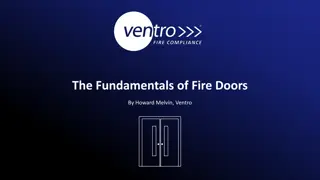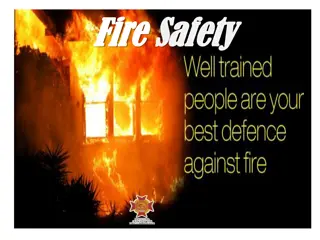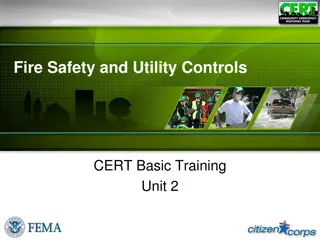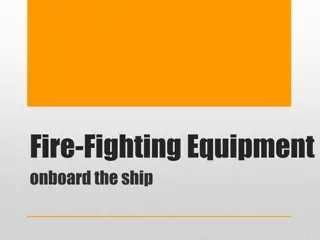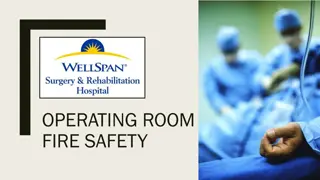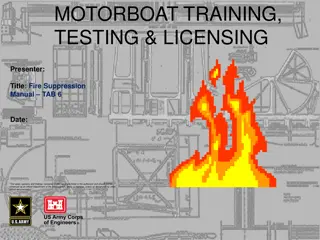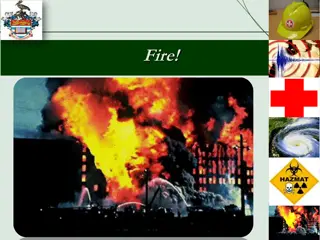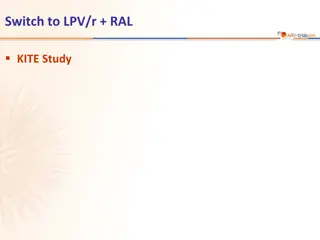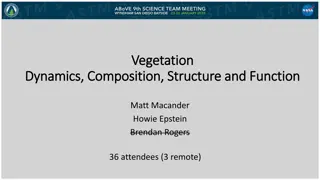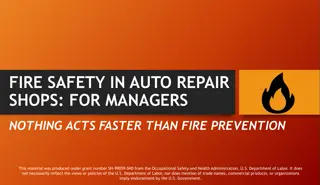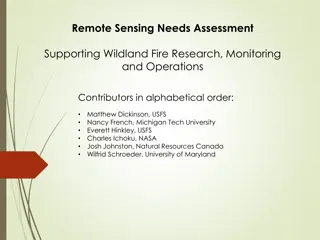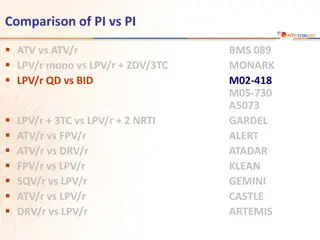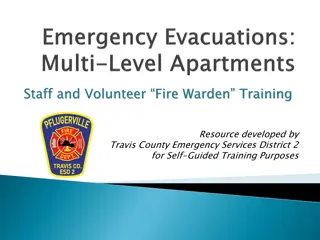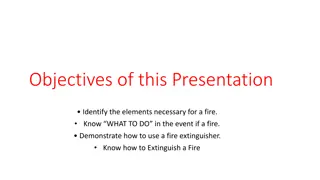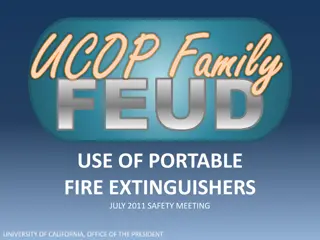CEOS LPV Fire Disturbance Products Overview
CEOS LPV Fire Disturbance products play a crucial role in monitoring and validating active fire and burned area datasets. The current status highlights the validation protocols in place for reference data generation, product inter-comparisons, and the need for validation information for multiple user communities. Various studies have been conducted for inter-comparisons of active fire products against ground observations, emphasizing the importance of validation for Fire Radiative Power (FRP) data. The validation of FRP data is challenged by limited availability of reference data, saturation of high-resolution sensors like ASTER, and the costly logistics involved in validation through field campaigns.
Download Presentation

Please find below an Image/Link to download the presentation.
The content on the website is provided AS IS for your information and personal use only. It may not be sold, licensed, or shared on other websites without obtaining consent from the author. Download presentation by click this link. If you encounter any issues during the download, it is possible that the publisher has removed the file from their server.
E N D
Presentation Transcript
CEOS LPV meeting : ESRIN 2nd March CEOS LPV : Fire Disturbance Luigi Boschetti, Andrew Edwards & Gareth Roberts
CEOS LPV Fire Disturbance: Current Status Current ECV product requirements (GCOS-200) Beyond ECVs: fire products have multiple user communities that need validation information (e.g. GEO GWIS, UN REDD+)
CEOS LPV : Fire Disturbance Products Website Updates : Active Fire\FRP & Burned Area datasets (not all global) Updated the publication list
CEOS LPV Fire Disturbance Products : Current Status Burned Area has well established validation protocol for reference data generation. Level 2 Level 3 ongoing Active Fire Level 3 and 4 (MODIS/ASTER only) FRP Level 1 Currently active fire & FRP validated via : Product inter-comparison Comparison to ground datasets
CEOS LPV : AF inter-comparison SEVIRI Active fire products inter-comparison Spatial & temporal comparison of fire pixel detections (e.g. same sensor, diff alg.) Baldassarre et al., 2015; Atm. Chem. Phys Total particulate matter estimates [tons] est. from WF_ABBA and FRP-PIXEL
CEOS LPV : Active Fire product inter- comparison MODIS (1km) against ASTER (60m) Giglio et al., 2016; RSE MODIS validation using ASTER Most comprehensive AF validation to date Global, temporally and spatially coincident
CEOS LPV : Active Fire product inter- comparison Active products compared against ground obs. Comparison of SEVIRI active fire detects against fire reports Fire agency \ local gov. Fillizzola et al., 2017; RSE
CEOS LPV : FRP validation Validation of FRP constrained by: Limited availability of reference data ASTER saturates Other high resolution sensors not temporally coincident Validation typically carried out by Field campaigns (prescribed fires; surface & airborne imagery) Costly logistically challenging limited number of samples Dickinson et al., (2016)
CEOS LPV Fire Disturbance: Future Needs Finalize the burned area protocol: Literature now mature to address sampling protocols and accuracy metrics Linkages to other products (e.g. Land cover change, Albedo) to ensure consistency How to develop validation protocol of AF / FRP? Introduce SI traceable units for active fire and FRP products Define a protocol for product intercomparison Reference datasets for AF & FRP validation into the future ? Coordinated field campaigns Reliable but limited spatially\temporally, logistically difficult Inter-comparison of different sensors ASTER approach not applicable Geostationary sensors important for FRP Not global




